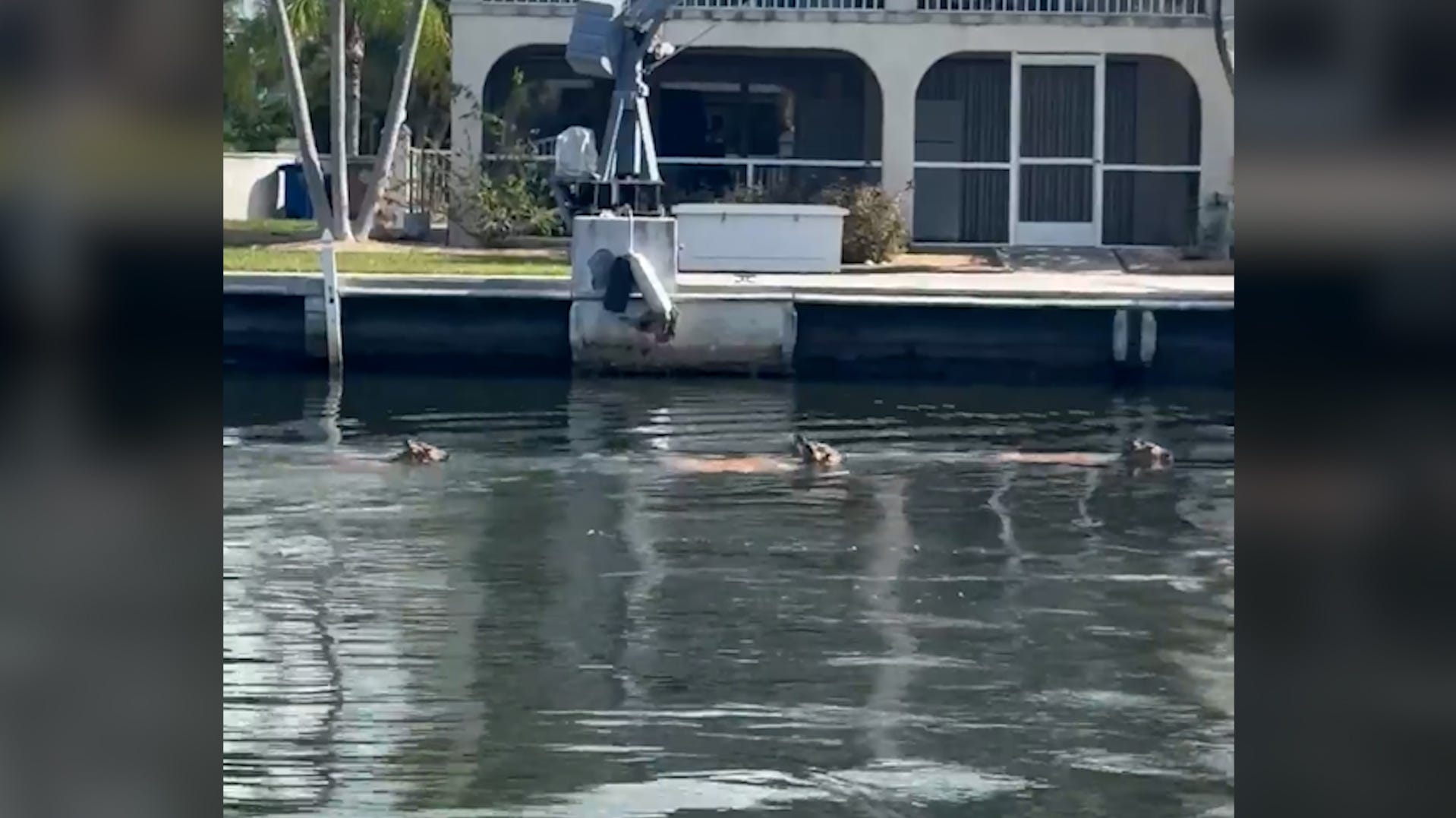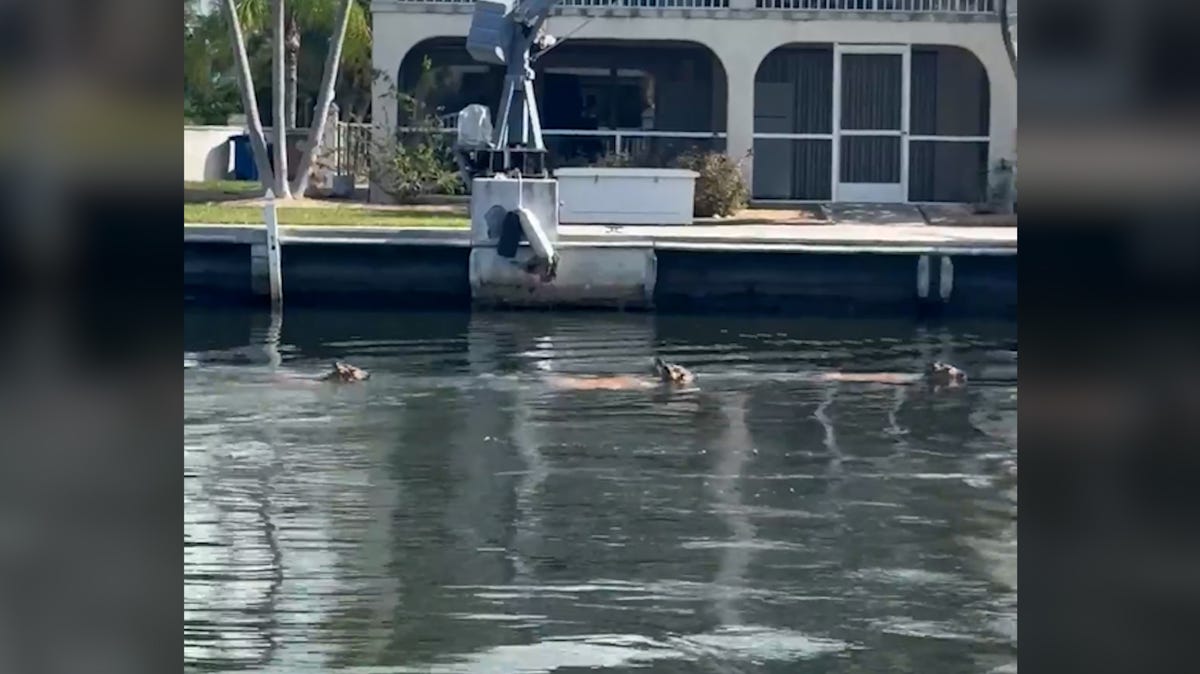A herd of endangered Key deer took a swim in a Florida Keys canal in what onlookers described as a “rare occurrence.”
Video footage shows a group of about five deer gracefully jumping into the water and gliding through it.
“We were in awe,” Jaime Kulaga, who filmed the video, told USA TODAY Aug. 7. “We have deer all over Big Pine Key, but it is a rare occurrence to actually see them swim.”
Kulaga said she and her family were going down a canal in their community in Big Pine Key around 9:40 a.m. on Aug. 2 when they turned and saw the group “sitting on the edge foraging.” Then as one of them turned and looked at the water, Kulaga said she told her husband to slow down their boat as she thought the deer would jump.
“Sure enough she jumped right in and the whole family followed her,” Kulaga said. “They swam so perfectly and calmingly right to the other side. Then, they jumped right out with no hesitation and started foraging again.”
Kulaga said it appeared the animals took a “short swim or a little bath in the hot sun.”
“They knew exactly what they were doing, and they made it perfectly to the other side,” the licensed mental health counselor and life coach said, adding she checked if they did.
Watch: Endangered Key deer take a dip in Florida canal
Watch as endangered deer leap in for a swim in a Florida Keys canal
Endangered Key deer seemed to feel the heat as they leaped into a canal in Big Pine Key, Florida, for a surprise swim.
Key deer in Florida
Key deer are the smallest subspecies of white-tailed deer. They are classified as an endangered species by the Federal Endangered Species Act and as a federally designated endangered species in Florida.
The small animals with light to dark-brown coating, a white belly, and a black snout are found only in the Florida Keys, according to Florida Fish and Wildlife Conservation Commission. Their range includes about 26 islands from Big Pine Key to Sugarloaf Key, and they can swim from one island to another, the agency said.
While hunting and habitat destruction initially caused their numbers to fall to less than 50 in the 1940s, the main threat to their existence now is getting hit by vehicles, followed by illegal feeding which results in “concentration of Key deer populations, facilitating the spread of parasites and disease,” according to the Florida Fish and Wildlife Conservation Commission.
Saman Shafiq is a trending news reporter for USA TODAY. Reach her at sshafiq@gannett.com and follow her on X and Instagram @saman_shafiq7.

